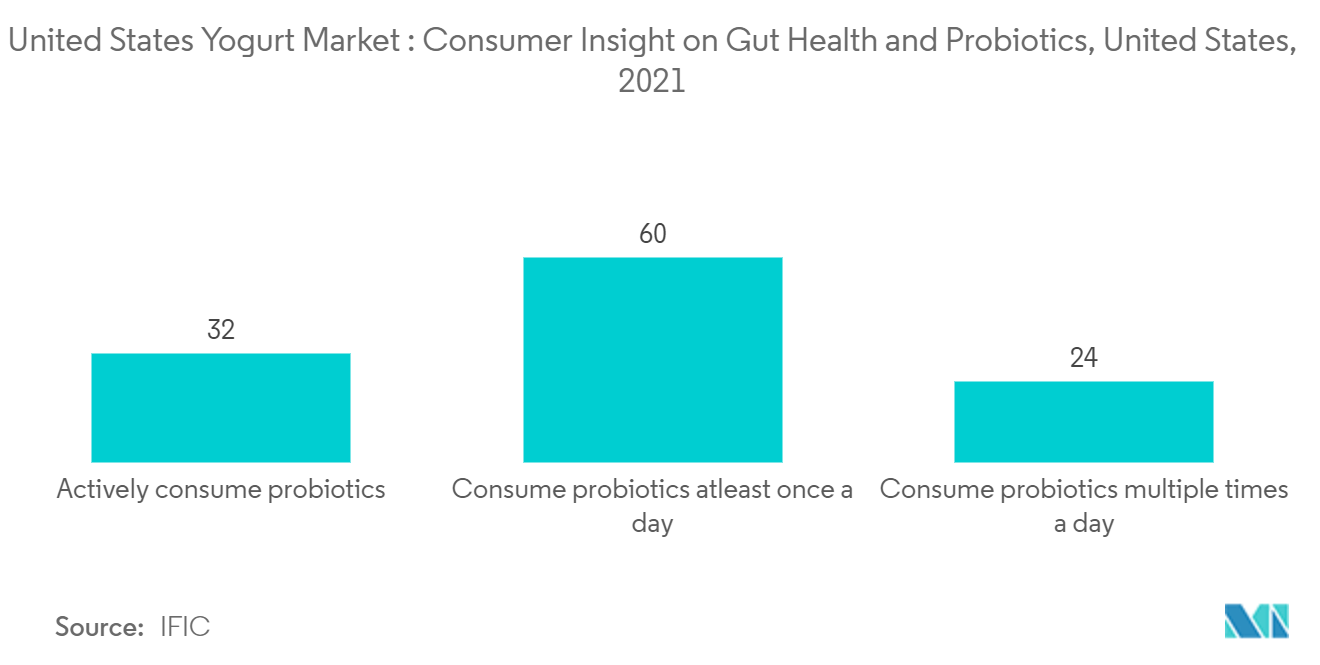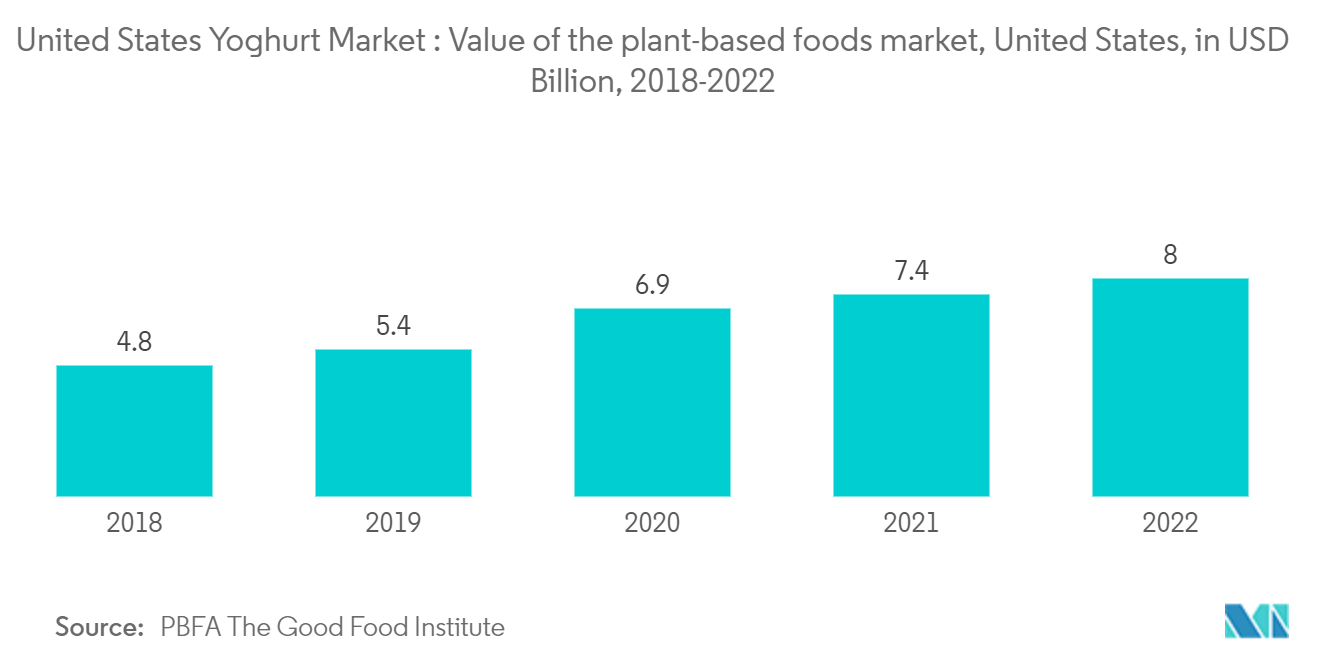Market Trends of US Yogurt Industry
Growing Digestive Heath Concerns Heating up Demand for Probiotic Products
The high prevalence of digestive disorders in the country has benefitted the demand in the probiotics market. Yogurt, being a probiotic, is available in both drinkable and traditional forms under different flavors, making it one of the most-preferred food products by consumers seeking benefits for their digestive health. Probiotics are a driving force within the booming digestive health products category, and they are being consumed by people of all age groups in the country. The progressive inclination of American consumers toward digestive health-oriented products has involved probiotic food products, including yogurts. Yogurt is perceived as one of the healthiest and most protein-rich on-the-go snacks for consumers. Furthermore, they have paved the way for manufacturers to constantly invest in product innovation to capture the evolving consumer trend and gain a competitive advantage in the market. Probiotics are linked to a host of health benefits from improving skin to weight loss. Also, yogurt is the first food consumers think of as a super-rich probiotic food product, catering to the market studied. For instance, in the United States, in 2021, 14.3 pounds of yogurt were consumed per person on average, compared to 13.6 pounds in 2020, according to the United States Department of Agriculture.

Rising Consumer Demand for Non-dairy Yogurt
Plant-based foods continue to rise in popularity, including dairy-alternative products such as yogurt. Plant-based yogurt alternatives are renewing interest in the market with the growing number of vegans and flexitarians. Veganism in the region has been the key reason for the growth of this category, further boosted by indulgence buying. Manufacturers have responded to this trend by introducing a variety of non-dairy yogurts made from ingredients such as almond milk, coconut milk, soy milk, and cashew milk. These products are often marketed as healthier and more sustainable alternatives to traditional dairy-based yogurts. In addition to the vegan trend, lactose intolerance is also a growing concern for many consumers. Lactose-free yogurts are now widely available in the United States, providing a solution for those who cannot tolerate dairy products.
Players operating in the market believe that innovation can drive the market. Plant-based yogurts made from almond, cashew, coconut, flaxseed, and oats are evolving in the landscape. For instance, in 2021, Valio USA launched a new line of oat yogurts. The yogurt flavors include Plain, Vanilla, Blueberry, and Raspberry. The increasing popularity of dairy alternatives has led to the rapid growth of plant-based probiotic yogurts. Players launch more probiotic plant-based yogurts. For instance, in 2021, Pillars Yoghurt LLC joined the burgeoning plant-based yogurt category with the launch of Pillars Plant, an organic coconut probiotic yogurt in three flavors: Vanilla, Mixed Berry, and Strawberry Banana.



